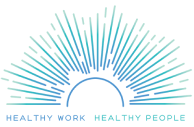Recentemente voltei de uma viagem muito longa, mas valiosa, para Porto Alegre, no sul do estado do Rio Grande do Sul, Brasil. Fui convidado a apresentar por Ana Maria Rossi, Presidente da International Stress Management Association (ISMA), Brasil, em dois dias de aula sobre estresse. Ana Maria foi uma anfitriã incrível e autora internacional de inúmeras livros sobre trabalho e saúde. O Brasil é um país maravilhosamente diverso, e o encontro foi repleto de pessoas inteligentes e atenciosas de todas as partes, incluindo psicólogos, médicos do trabalho, enfermeiras, assistentes sociais, especialistas em recursos humanos e consultores de órgãos governamentais, ONGs e setor privado.

O ponto alto da minha passagem pelo Brasil, depois de duas horas de palestra com tradução simultânea para o português, foi no dia seguinte, quando a turma começou a trabalhar em grupos para discutir um “estudo de caso” sobre uma organização brasileira fictícia que havia usado a Pesquisa de Trabalho Saudável. Os mais de 60 participantes da turma receberam o contexto da organização, que incluía o fato de ser uma agência do setor público com 200 vagas em aberto, alta rotatividade e esgotamento. Usando dados da pesquisa sobre vários estressores de trabalho comuns, eles deveriam fingir ser consultores dessa organização e recomendar “intervenções” ou soluções para os estressores de trabalho que colocavam em risco a saúde e a segurança dos funcionários.

Como muitas organizações do setor público, as demandas de trabalho e a carga de trabalho eram muito altas. Além disso, o controle do trabalho era baixo. Altas demandas de trabalho e baixo controle do trabalho juntos, conhecidas como “tensão no trabalho”, são um risco adicional para distúrbios de saúde mental, esgotamento e fatores de risco para doenças cardiovasculares. Cada grupo apresentou planos semelhantes de curto, médio e longo prazo para mudanças. Muitos se concentraram no treinamento de supervisores/gerentes como primeiro passo, com a intenção de ajudar novos supervisores (promovidos internamente) a aprender boas habilidades de gerenciamento para que pudessem oferecer aos funcionários suporte adequado e mitigar o bullying ou outros comportamentos tóxicos. Parte do treinamento incluiria o aprendizado de habilidades de comunicação positiva para fornecer um ambiente seguro para os funcionários darem feedback sobre a otimização da carga de trabalho e, assim, também aprimorar o “controle do trabalho”.
Todos os grupos refletiram sobre a necessidade de contratar mais funcionários, dado o grande número de vagas abertas e a alta rotatividade de pessoal. Um grupo teve um insight particularmente importante – como atrair novas contratações e reter funcionários quando há níveis tão altos de excesso de trabalho, esgotamento e baixa moral. Aqui, eles sugeriram que, a curto prazo, programas de promoção da saúde e controle do estresse podem ser úteis, além de fornecer “horas de folga” em troca de participação.
Não há respostas rápidas para a criação de locais de trabalho saudáveis. Ideias inovadoras e uma vontade de aprofundar e apresentar o caso de “negócio” para a liderança, avaliar ou diagnosticar as fontes de estresse no trabalho e promover a colaboração dos funcionários em soluções para estressores de trabalho são todos fundamentos para a mudança.






